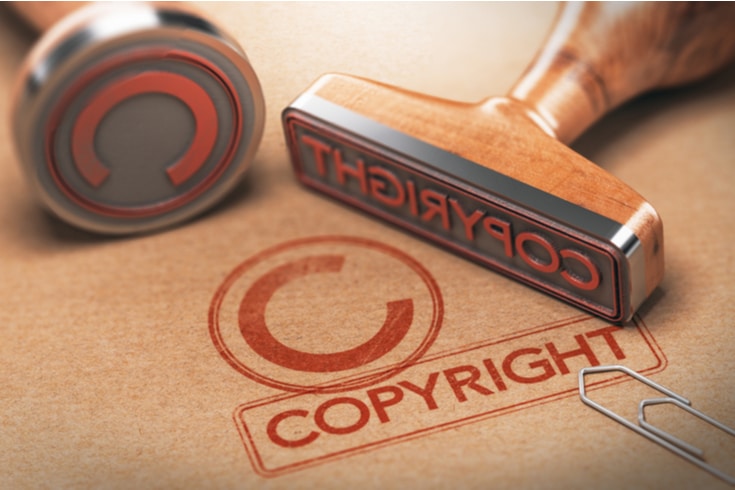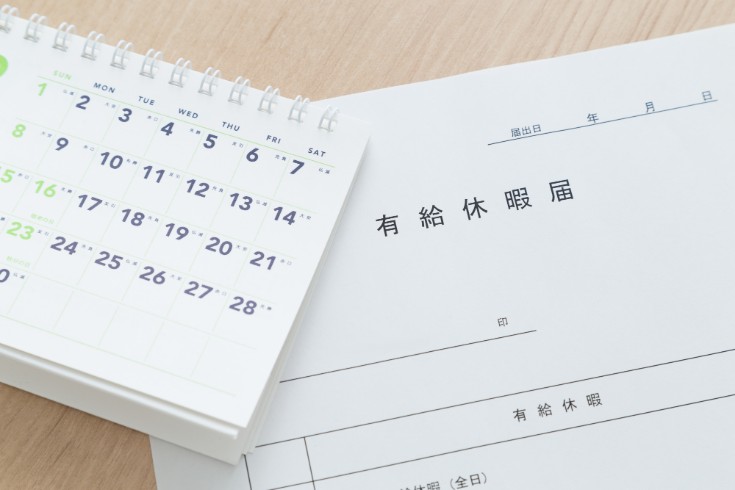'What is 'Japanese Job-Related Works'? Explaining the 4 Requirements and How Corporations Can Obtain Copyrights'

Under the Japanese Copyright Law, the principle is that the person who actually created the work is the author. And this author holds the copyright.
However, for example, if the copyright of a news article written by a newspaper reporter belongs to the reporter who wrote it, as per the principle, the company would not be able to publish or modify the article online without the reporter’s consent. To avoid such inconvenient situations, the Japanese Copyright Law has established a system called “work made for hire” to modify the principle.
In this article, we will explain the content of the “work made for hire” system, the requirements for it to be recognized, and how to deal with situations where the requirements for “work made for hire” are not met.
What is Copyright?

“Copyright” refers to the exclusive right to use a “work” such as a novel, painting, film, or program that one has created. Copyright arises at the same time as the creation of the work, and no procedures such as application, as in the case of patent rights, are necessary.
Works and Copyright Holders
The definition of “work” is stipulated in Article 2, Paragraph 1, Item 1 of the Japanese Copyright Law as follows:
Article 2, Paragraph 1, Item 1: Refers to something that creatively expresses thoughts or feelings and falls within the realm of literature, academia, art, or music.
The following can be considered as works:
- Theses, novels, scripts, poetry, haiku, speeches
- Songs and lyrics accompanied by music
- Choreography for Japanese traditional dance, ballet, dance, and pantomime
- Paintings, prints, sculptures, comics, calligraphy, stage settings
- Artistic buildings
- Maps and academic drawings, diagrams, models
- Theatrical films, TV dramas, online streaming videos
- Photographs, gravure
- Computer programs
The “author” is, in principle, the person who actually created the work. And the copyright belongs to the author who created the work. Therefore, the person who writes a novel or draws a picture becomes the author and the copyright holder.
However, if a company has to obtain permission from an employee every time it uses a work created by the employee through its business, it would take time and effort, and the business would not run smoothly. Also, there is a possibility that the copyright may be transferred to a competitor after the employee leaves the company.
To solve these problems, the Japanese Copyright Law provides a system that considers the company employing the employee, not the employee who actually created the work, as the author when certain requirements are met. This is called “work made for hire“. And since the company is considered the author, it owns all the copyrights (and moral rights of the author) related to the work.
Requirements for Works Made for Hire

Article 15, Paragraph 1 of the Japanese Copyright Law stipulates the following about works made for hire:
Article 15, Paragraph 1: Unless otherwise stipulated in a contract, work rules, or other regulations at the time of creation, the author of a work (excluding computer programs) created in the course of duties by a person working for a corporation or other employer (hereinafter referred to as “corporation, etc.”) based on the intention of the corporation, etc., and published under the name of the corporation, etc., is the corporation, etc.
To summarize, a work made for hire is established when the following requirements are met:
- The creation of the work is based on the intention of the corporation, etc.
- The work is created in the course of duties by a person working for the corporation, etc.
- The work is published under the name of the corporation, etc.
- There are no special provisions in the contract, work rules, or other regulations.
1. What does “based on the intention of the corporation” mean?
First, the work must be created “based on the intention of the corporation, etc.”
“Based on the intention of the corporation, etc.” means that the intention to create the work is directly or indirectly dependent on the judgment of the employer. Typically, this involves the employer planning and overseeing the creation of the work and instructing employees to carry out the creative activities.
However, even without specific instructions or approval from the employer, if it is naturally expected from the department or business content that the employee will create the work, this requirement is considered to be met.
Whether the “intention” is affirmed varies in court precedents. Therefore, in important cases, it is necessary to create and retain evidence and documents to support the “intention” of the corporation, etc.
2. What does “a person working for the corporation creates the work in the course of duties” mean?
Next, “a person working for the corporation, etc.” must create the work “in the course of duties.”
The typical example of “a person working for the corporation, etc.” is when an employee has entered into an employment contract with the employer.
Even without an employment contract, if it can be evaluated that the employer and the employee are in an employment relationship in substance, this requirement can be met. For example, if a freelance writer is involved in the creation of magazine articles under the command of a publisher, in the same position as other employees, the writer may be considered “a person working for the corporation, etc.”
On the other hand, if the work is merely commissioned to an external party who has no employment relationship, that external party does not fall under “a person working for the corporation, etc.” Therefore, when commissioning the creation of a work to a third party under a contract, it is necessary to clearly state in the contract that the copyright will be transferred.
“Created in the course of duties” means that the employee creates it as part of their job, regardless of whether it is during working hours.
Therefore, if an employee independently creates a work unrelated to their job in their spare time, or even if they create a work completely unrelated to their job privately during working hours, the company will not become the author of such work.
3. What does “published under the name of the corporation” mean?
Furthermore, the created work must be “published under the name of the corporation, etc.”
“Under the name of” means not just listing the corporate name on the work, but displaying it as the author’s name of the work.
Also, “published work” includes not only works that have actually been published under the name of the corporation, etc., but also works that are planned to be published, and works that are not published but would naturally be published under the name of the corporation, etc. if they were to be published.
Please note that for computer programs, the requirement of “published under the name of the corporation, etc.” is not required (Article 15, Paragraph 2). This is due to the consideration that many programs do not plan to be published.
4. What does “no special provisions in the contract, work rules, or other regulations” mean?
Even if the above requirements are met, if there are special provisions in the “contract, work rules, or other regulations” at the time of creation of the work that stipulate the employee as the author, the establishment of a work made for hire can be prevented. Therefore, if such provisions are stipulated, the employee will be the author.
Please note that this special contract must exist at the time of creation of the work. This is based on the consideration that the status of the author should not fluctuate after the creation of the work, as it would cause confusion in legal relations.
How a Company Can Obtain Copyright Without Meeting the Requirements of Work Made for Hire

If the requirements for work made for hire are not met, the employee will be the author as a general rule. Therefore, the company cannot become the author.
However, it is possible for the company to acquire the copyright held by the employee, who is the author. Here, we introduce two ways for a company to acquire copyright from its employees.
Establish in Employment Rules
“Employment Rules” refer to the rules and regulations set by the company for its employees.
One method is for the company to pre-establish in its employment rules that it will receive a transfer of copyright from its employees. Specifically, the following provision can be considered:
- The rights related to the works created by the employee through their duties (including the rights under Articles 27 and 28 of the Japanese Copyright Law) shall belong to the company.
By establishing such a provision, the company can acquire copyright from employees to whom the employment rules apply.
Create an Individual Contract
Another method is to conclude an individual copyright transfer contract between the company and the employee who holds the copyright. Employment rules do not apply to those who are not in an employment relationship, so this method is necessary.
With this method, it is necessary to conclude a contract individually with each employee. At that time, individual conditions can be set for each employee. Therefore, even if you are in an employment relationship and want to set individual conditions, it would be better to conclude a copyright transfer contract.
Be Careful of Moral Rights!
While “copyright” can be transferred, “moral rights,” which are exclusively granted to the author, cannot be transferred.
If the employee retains their moral rights, the company may not be able to freely modify the work. Therefore, in addition to acquiring copyright, it is advisable to agree with the employee not to exercise their moral rights against the company.
Summary: Consult a Lawyer if You Have Trouble with Works Made for Hire

We have explained the system of works made for hire, where entities other than the creator of the work can exceptionally become the author.
Companies need to verify whether the works created by their employees meet the requirements of works made for hire.
Even if the corporation believes that the requirements for works made for hire are met, the departing employee may not think so, and this often leads to trouble later on. Having a correct understanding of the requirements for works made for hire and whether they actually apply can prevent such problems.
If you find it difficult to determine the applicability of works made for hire, we recommend consulting a lawyer.
Category: General Corporate
Tag: General CorporateIPO





















